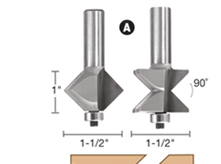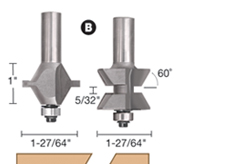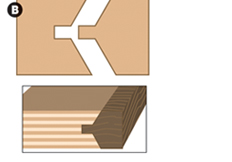Have a pretty elementary question. (from a typical newbie:BangHead: )
If I am using solid wood for 3/4" plywood edge banding, how do I prepare the plywood edge? Do I just depend on the accuracy of my TS or should I cut the ply a wee bit oversize and make a couple of passes with a flush trim bit, prior to securing the edge banding?
Thanks in advance for your suggestions.
Wayne
If I am using solid wood for 3/4" plywood edge banding, how do I prepare the plywood edge? Do I just depend on the accuracy of my TS or should I cut the ply a wee bit oversize and make a couple of passes with a flush trim bit, prior to securing the edge banding?
Thanks in advance for your suggestions.
Wayne





